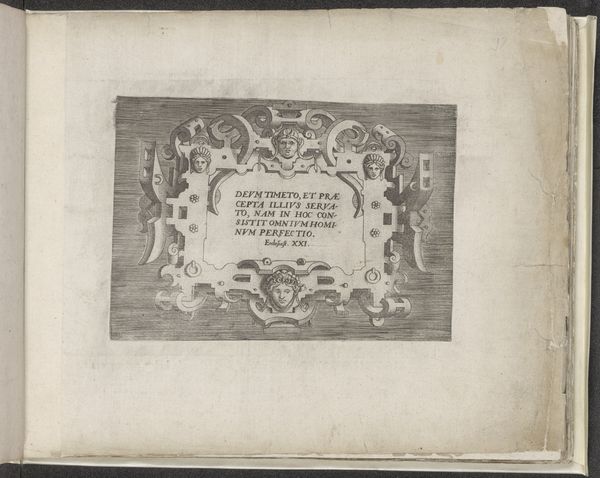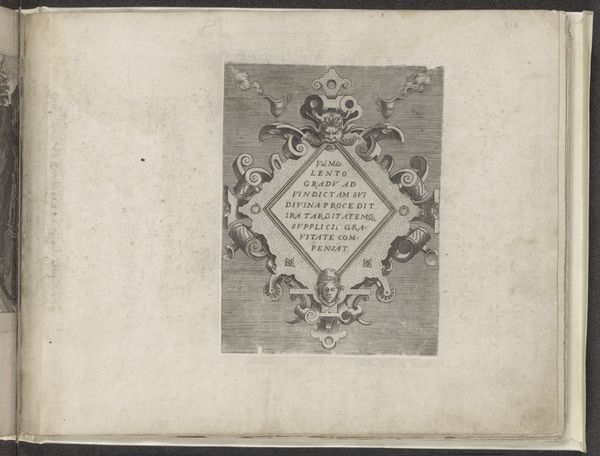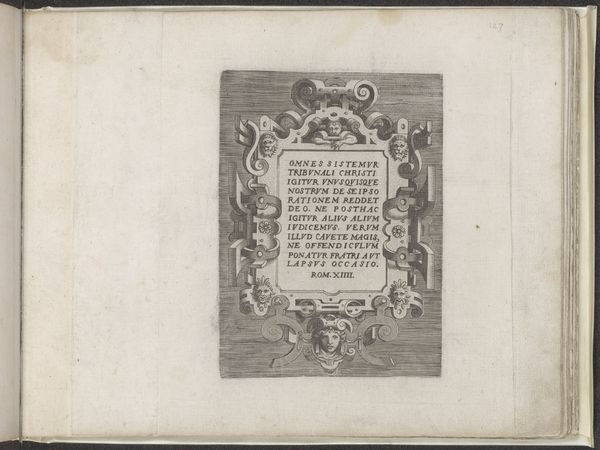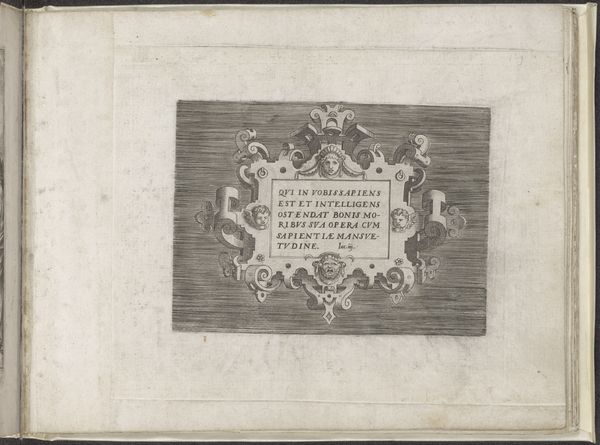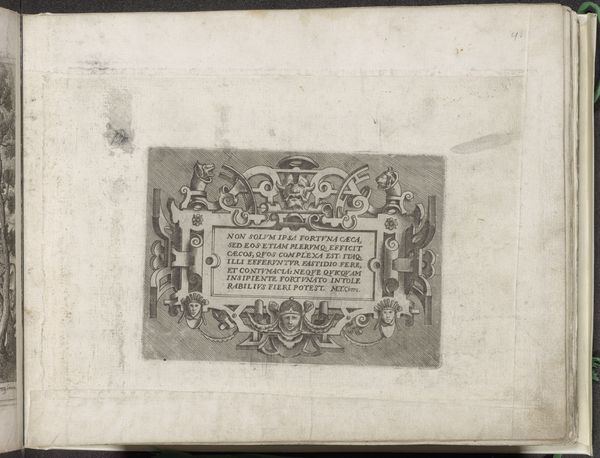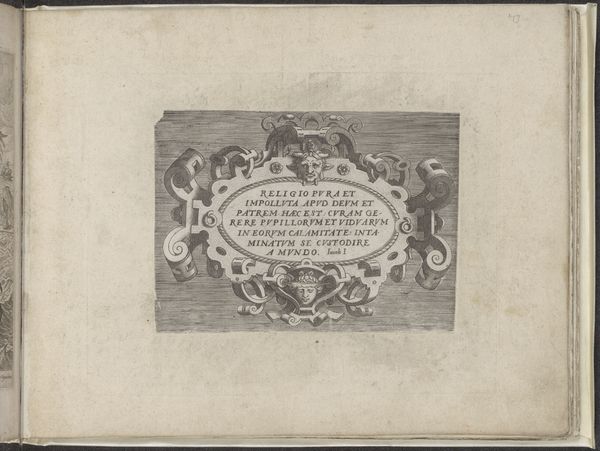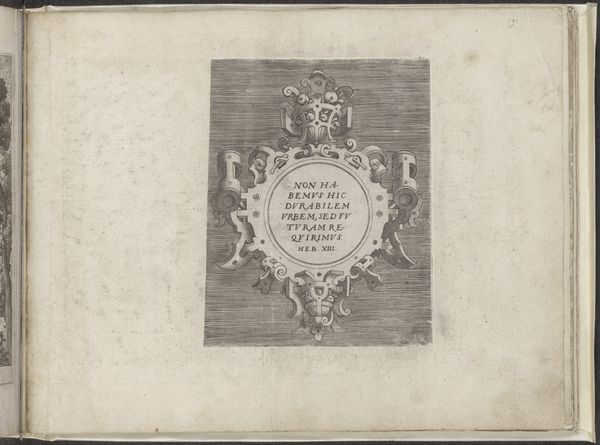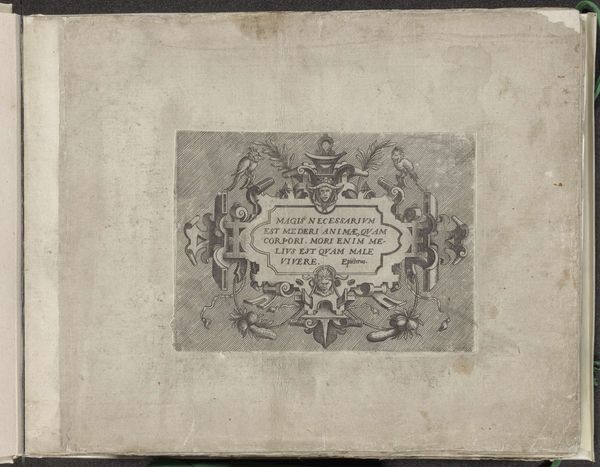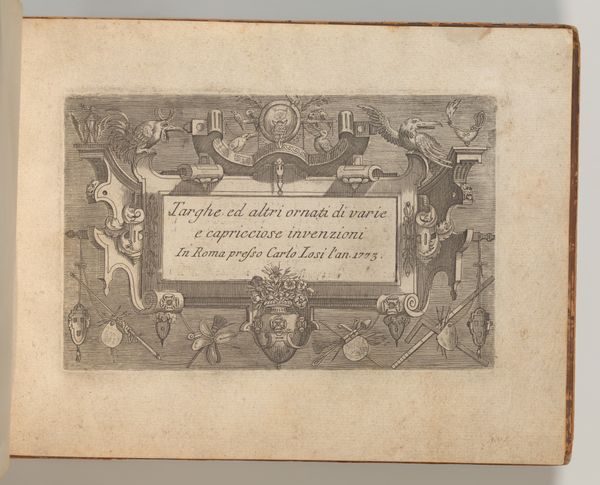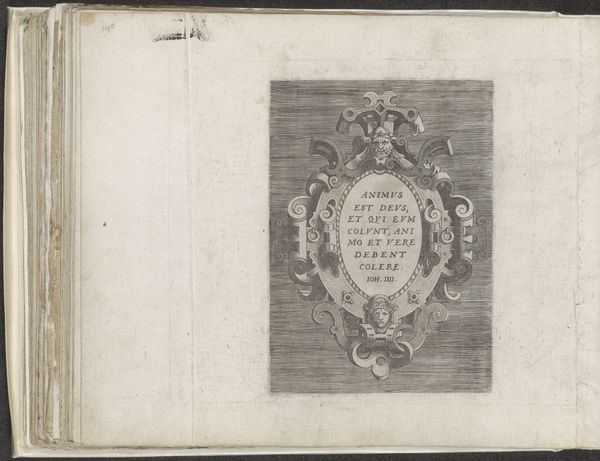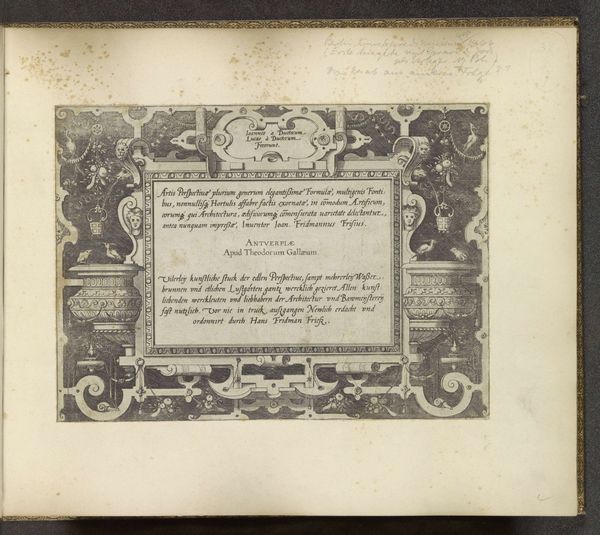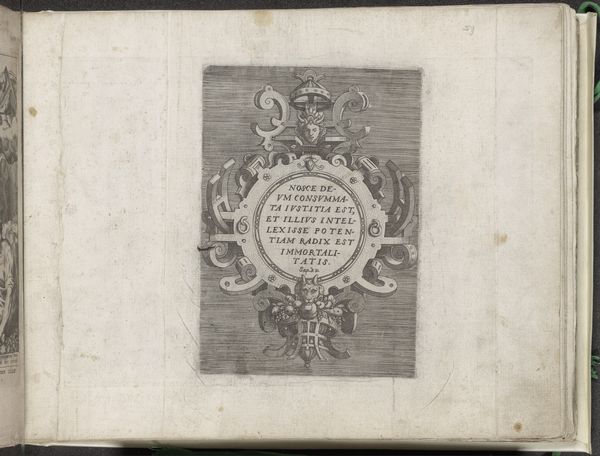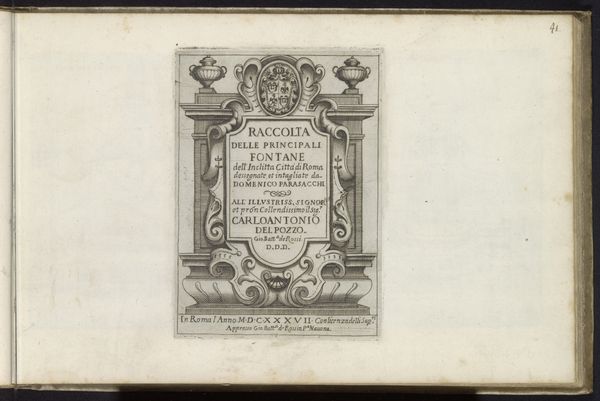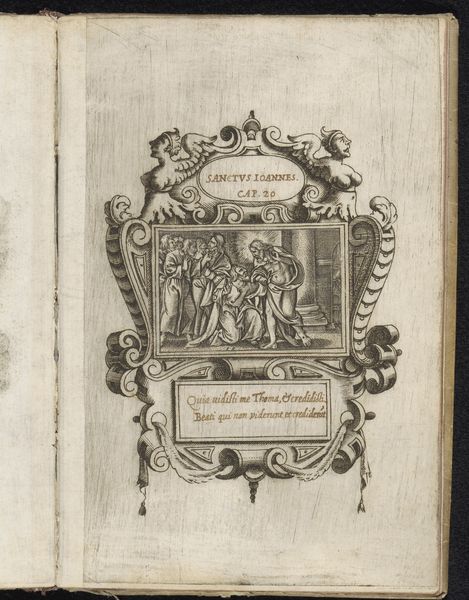
print, paper, engraving
#
ink paper printed
# print
#
paper
#
text
#
11_renaissance
#
engraving
Dimensions: height 141 mm, width 188 mm
Copyright: Rijks Museum: Open Domain
Editor: So, here we have a print titled "Cartouche met een tekst uit het Bijbelboek Johannes," created in 1555 by Frans Huys. It's currently housed in the Rijksmuseum. It feels almost secretive, like a hidden message on aged paper. I am fascinated by the frame, though... What symbols can we unearth in this piece? Curator: This cartouche, beyond simply displaying text, functions as a vessel carrying deeply embedded cultural memory. Consider the very act of framing – what does it separate, what does it emphasize? The grotesque faces, the classical figures…these aren't arbitrary decorations. They speak to the tension of the Reformation. Editor: Reformation tension, you say? Can you elaborate? Curator: Observe the central text— a quote from the Gospel of John: "For God so loved the world..." This message of salvation is encased by visual motifs from both pagan antiquity and grotesque imagery. In this piece, Frans Huys attempts to reconcile classical learning with Christian doctrine. Are these contrasting elements in conflict or in conversation? Editor: I never thought of it that way. I see a bunch of ornaments, but the interplay reveals something about intellectual currents of the time. Almost like an argument rendered in visual form! Curator: Exactly. Each choice – the lettering style, the ornamentation – it contributes to a broader dialogue about faith, reason, and the changing world. Think about how printmaking itself allowed for wider dissemination of such complex ideas. This piece, though small, is an archive of its time. Editor: So, this small print encapsulates some pretty big tensions! I am blown away about all it can reveal about its cultural environment. Curator: It serves as a reminder that images aren't neutral; they carry emotional, cultural, and theological baggage.
Comments
No comments
Be the first to comment and join the conversation on the ultimate creative platform.
